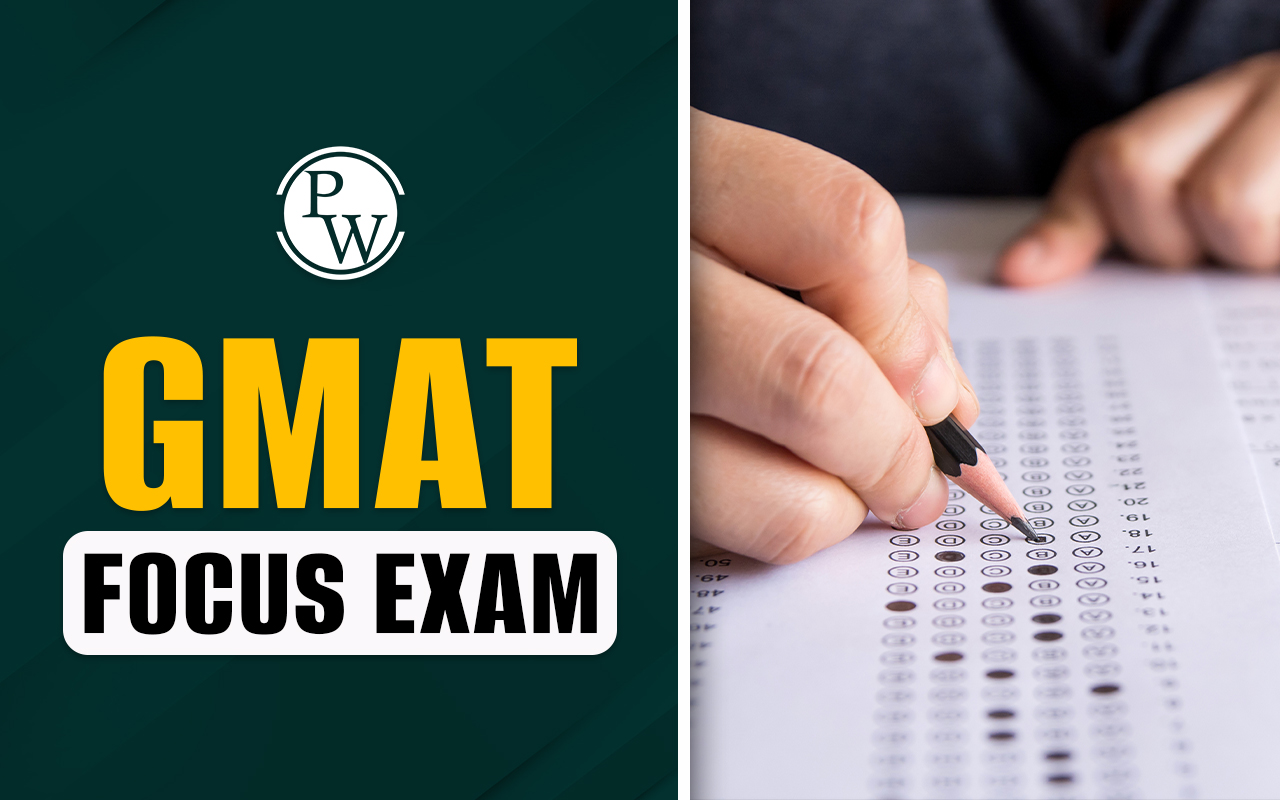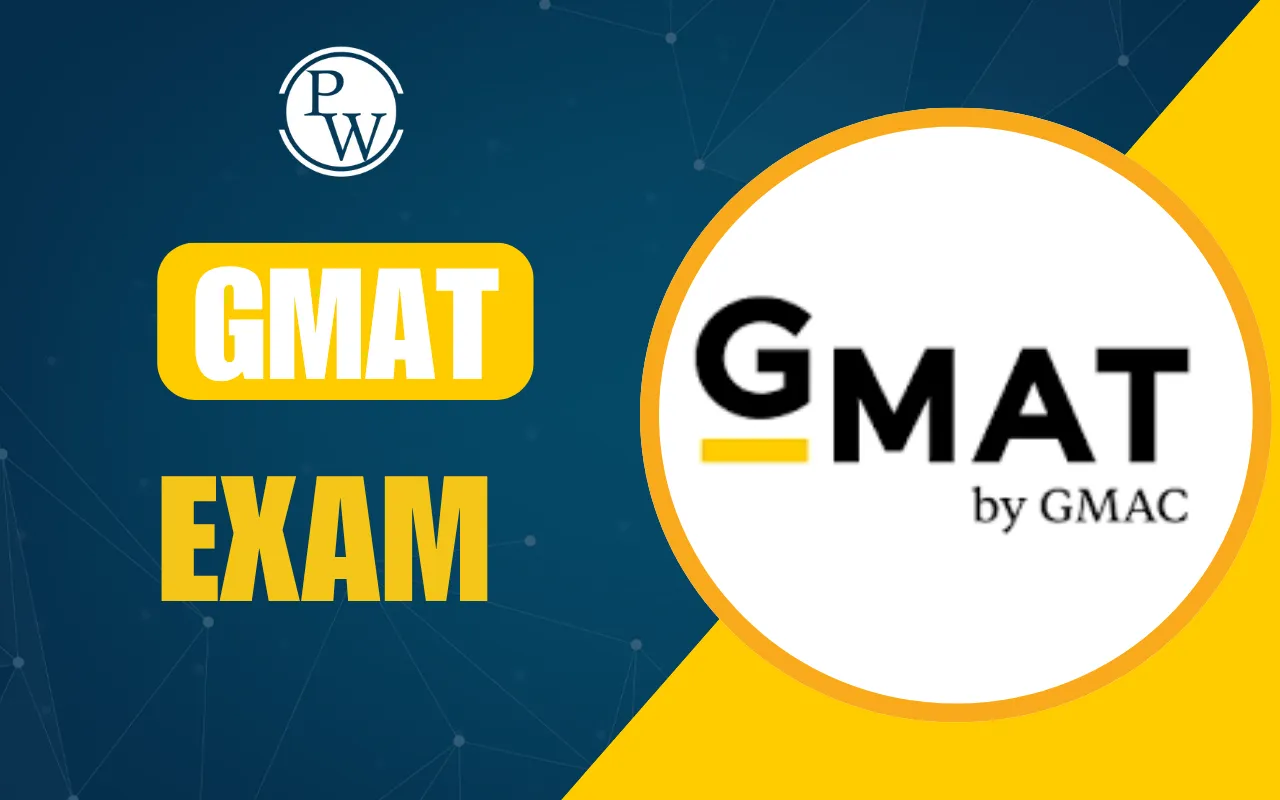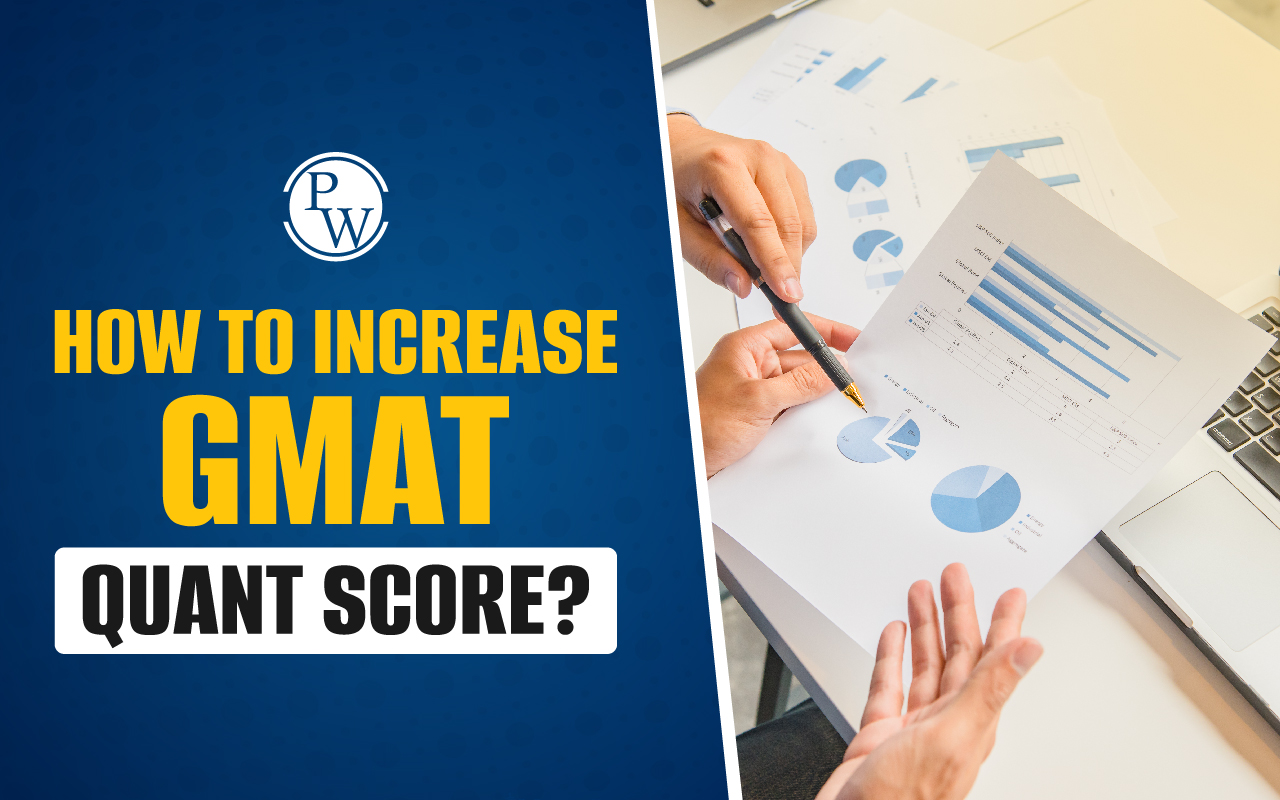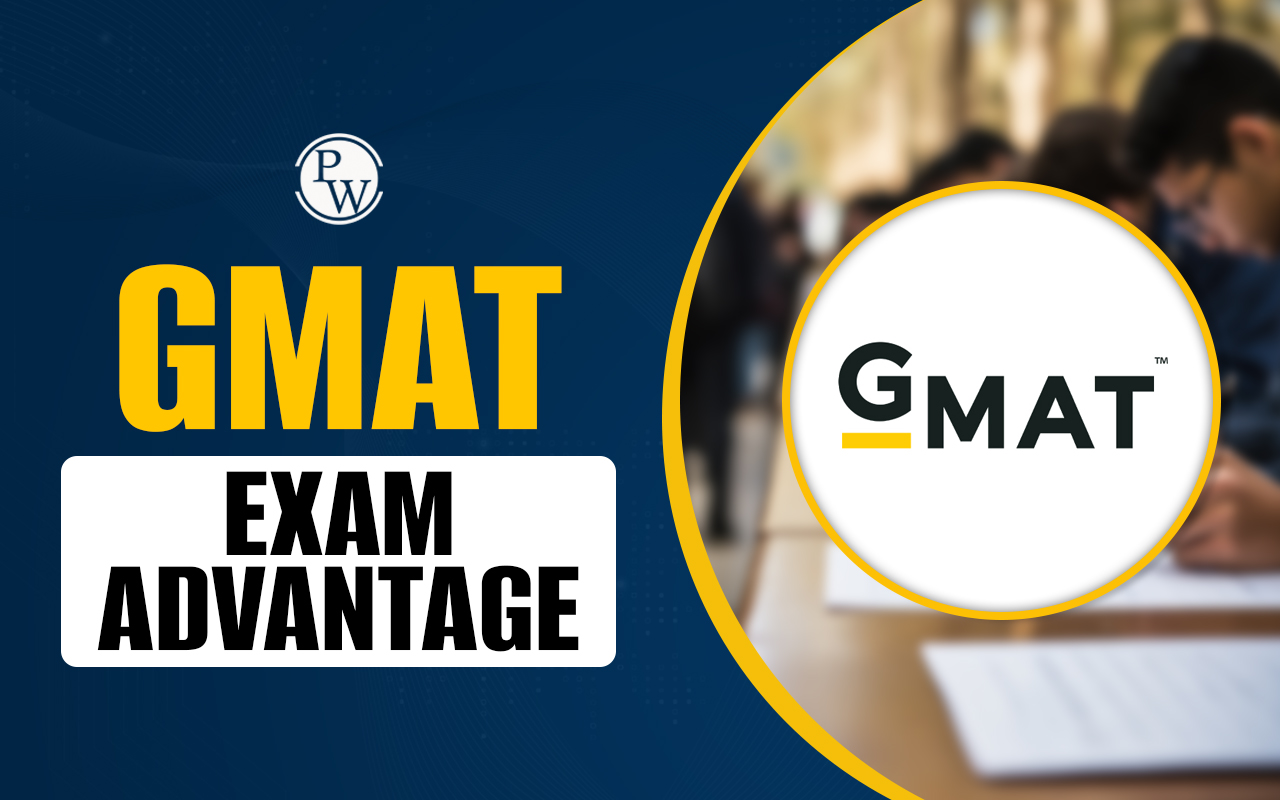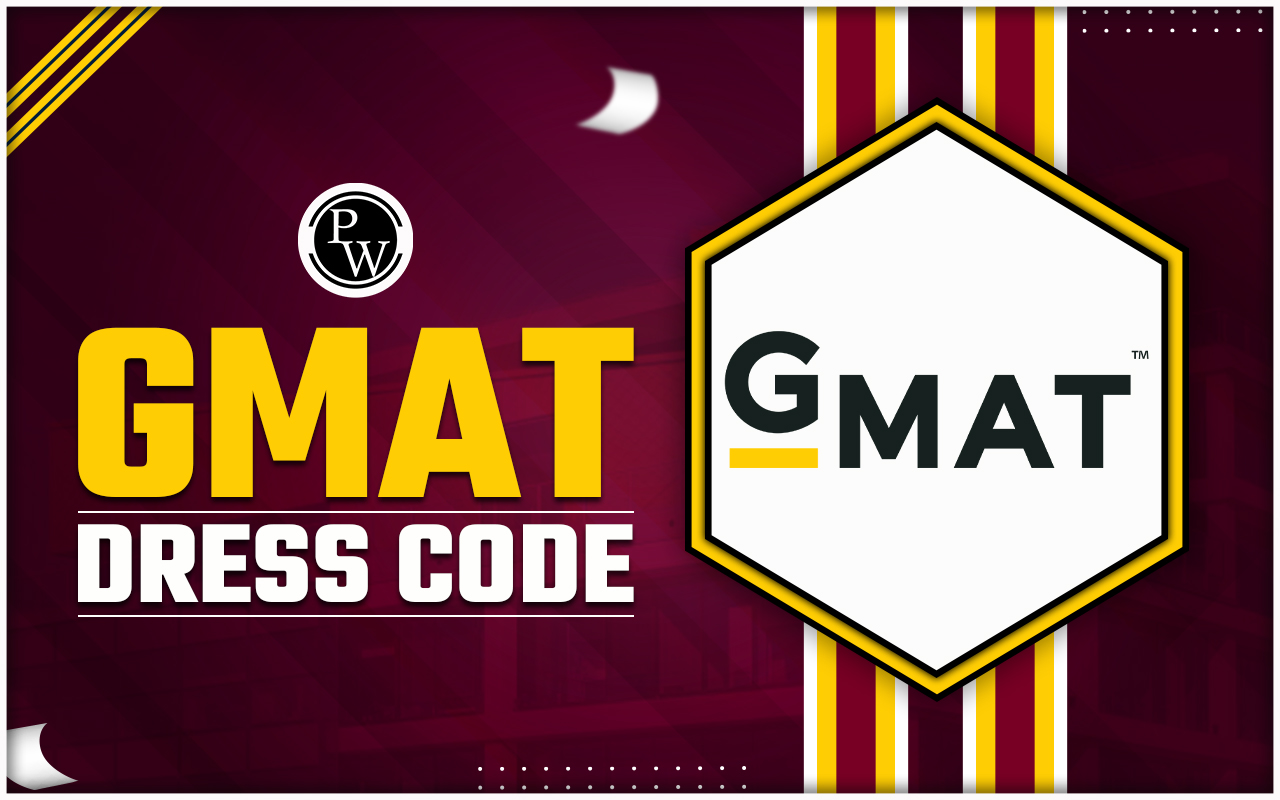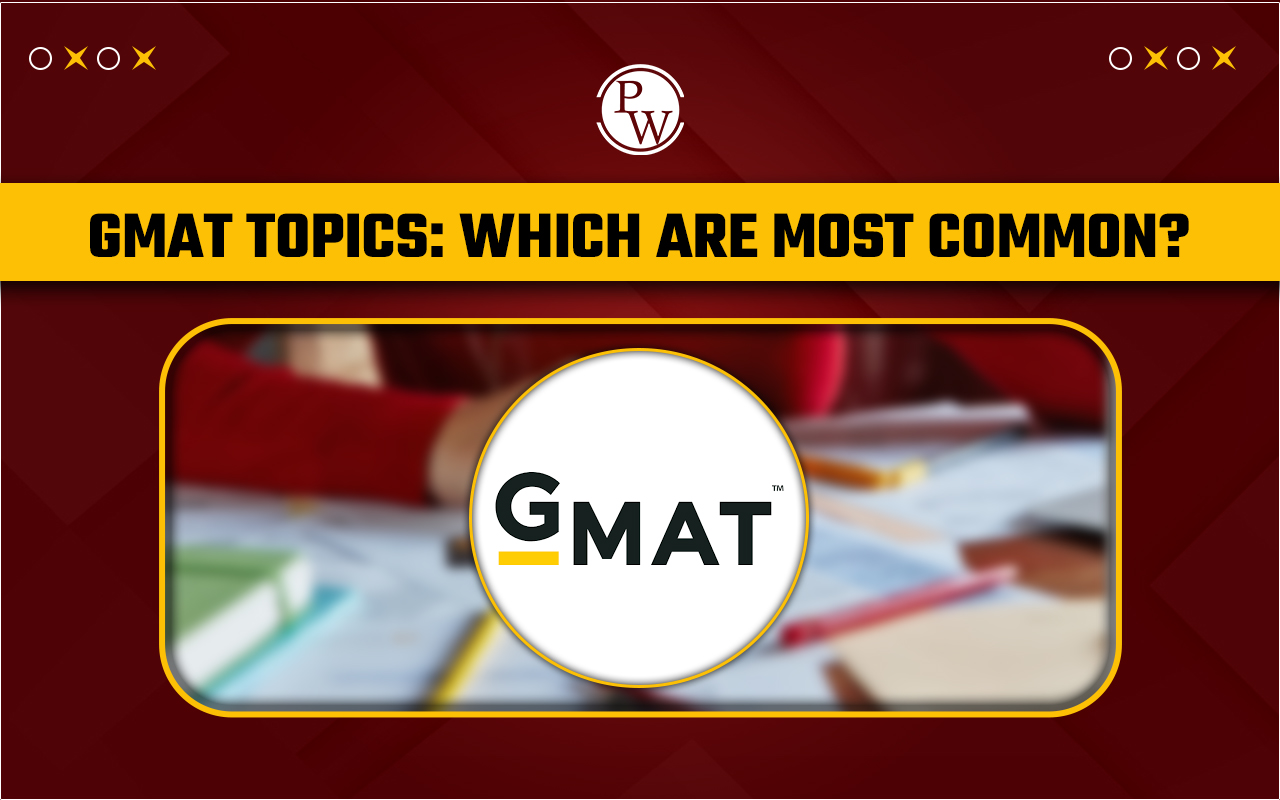
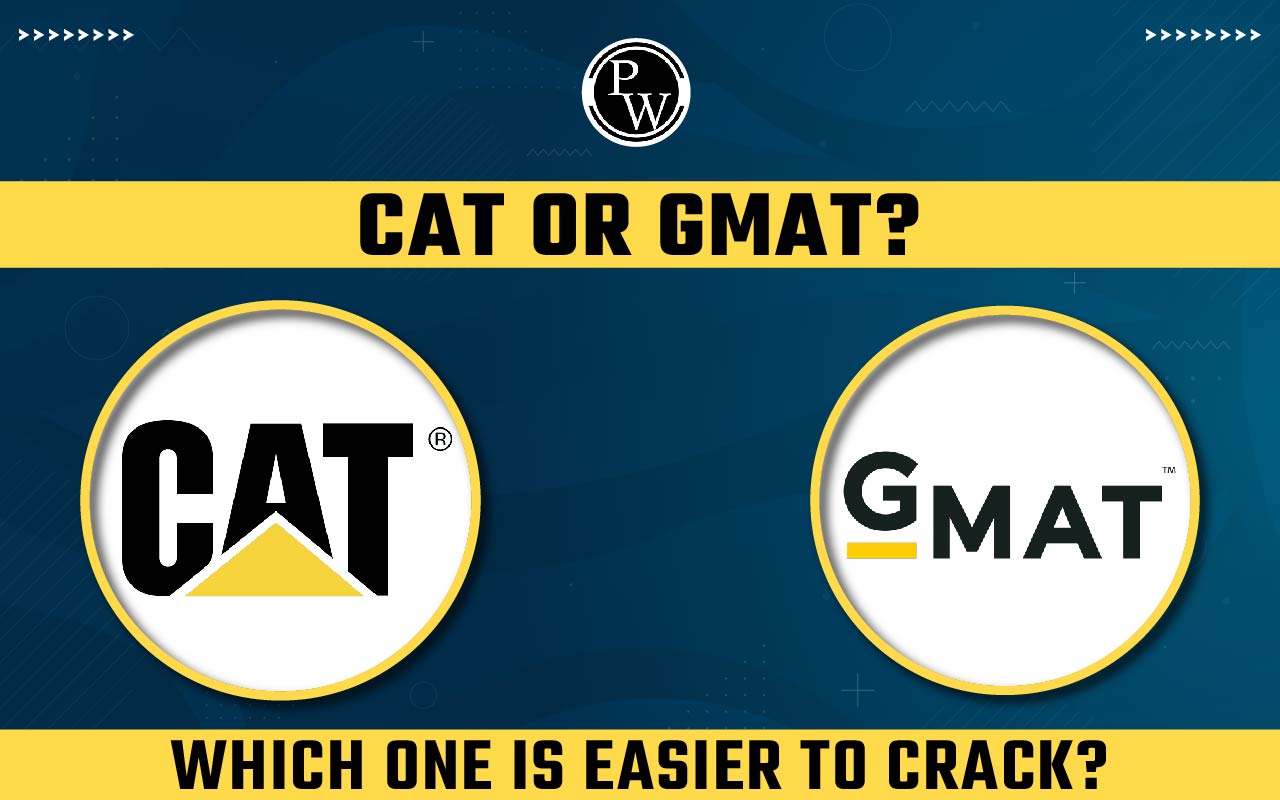
CAT or GMAT? Which One is Easier to Crack? CAT and GMAT are both MBA entrance exams that are accepted by top B-schools for the admission process. GMAt is an internationally recognised exam, while CAT is crucial for entering esteemed IIMs and other management institutes in India.
Both CAT and GMAT aim to evaluate candidates' aptitude, reasoning, and verbal skills. However, their exam format and marking system vary. Additionally, CAT is administered by IIMs on a rational basis once annually. In contrast, GMAT organises the GMAT exam throughout the year, requiring candidates to schedule the exam according to their preferred college's admission cycle. Candidates aiming to pursue an MBA degree seek to know which one is easier to crack among CAT and GMAT. To provide candidates with an answer, this article compares various aspects of CAT and GMAT.CAT or GMAT? Comparing Opportunities
The following provide notable differences between CAT and GMAT:- The CAT entrance exam is typically organised annually by one of the premier IIMs to select candidates for MBA/PGDM/PGP programs.
- Besides IIMs, institutions like JBIMS, FMS, SPJIMR, etc., also recognise CAT scores for MBA admissions.
- More than 1000 business schools in India acknowledge CAT scores.
- The GMAT exam is administered by the Graduate Management Admission Council (GMAC) multiple times a year.
- Top-tier international business schools in India and abroad accept GMAT scores for offering admission.
- Universities like Stanford, Harvard, UCB, MIT, etc., consider GMAT scores for their business management programs.
CAT or GMAT? Which One is Easier to Crack?
While both exams serve to evaluate candidates' aptitude and potential for pursuing an MBA program at renowned business schools, there are notable differences in their structure, format, covered topics, and other aspects. The GMAT is a computer-adaptive assessment designed to evaluate a candidate's proficiency in analytical writing, verbal and quantitative skills, and command of standard English composition. CAT is a non-adaptive exam that consists of sections like DILR, VARC, and QA. For aspiring candidates, understanding the key differences between both examinations is crucial before making a decision on which one to pursue. The following table provides a detailed comparison of the variances between GMAT and CAT:| Particulars | GMAT | CAT |
| Minimum Educational Qualification | No specific educational qualification. | Candidates must complete their Bachelor’s degree from recognised university. |
| Sections | Data Insights Verbal Reasoning Quantitative Reasoning | Verbal Ability and Reading Comprehension Data Interpretation and Logical Reasoning Quantitative Ability |
| Age Limit | Minimum age: 18 years 13-17 years applicants need parental consent | No lower or upper age limit |
| Age Limit | Minimum age: 18 years 13-17 years applicants need parental consent | No lower or upper age limit |
| No. of Questions | 64 | 66 |
| Frequency | Multiple times in a year | Once annually |
| Duration of Test | 2 hours 15 minutes | 2 hours |
| Adaptiveness | Question-Adaptive | Non-adaptive |
| Number of Attempts | Maximum 8 attempts overall 5 attempts in a single academic year with 15 days gap between attempts. | No limit on attempts |
| Negative Marking | Not present | Present |
| Marking Scheme | 60-90 with one point increment for every section | +3 marks for each correct answer -1 mark for each incorrect response |
| Application Fee | $250 | INR 2,000 |
| Score Format | Absolute score (out of 800) and percentile | Only percentile |
| Score Validity | 5 years (global) | 1 year (India only) |
| Acceptance | Accepted globally for B-school admissions | Accepted for B-school admissions within India |
CAT or GMAT? Comparing Difficulty Levels
In general, the difficulty level of the CAT tends to be significantly higher than that of the GMAT. This difference between both the exams is majorly due to the GMAT's more clearly defined syllabus and curriculum. On the other hand, IIM does not provide an official notification for the CAT syllabus. Candidates need to refer to the previous years' papers to know the crucial topics for the CAT exam. This leads to confusion among candidates and they have to invest more time in CAT preparation. The following points provide a detailed comparison between difficulty level of CAT and GMAT:- The most challenging section of the CAT exam is data interpretation and logical reasoning, while the DI section of the GMAT exam is considerably easier.
- Additionally, the quantitative reasoning section of the GMAT tends to be moderately simpler than the QA section of the CAT question paper. However, candidates find the VR section of GMAT challenging as compared to the VARC section of CAT.
- The GMAT exam offers flexibility, with the difficulty level of subsequent questions adapting based on candidates' responses to preceding questions. Consequently, the GMAT can be viewed as a test of adaptability, which constantly adjusts according to the candidate's knowledge and skills.
CAT or GMAT? Post-Test Admission Procedures
The post-test selection process holds significant importance in MBA admissions. After qualifying for either the GMAT or CAT exams, candidates have to go through various selection stages. Following the GMAT exam, numerous colleges and universities typically conduct the following selection rounds:- Essay composition
- Submission of recommendation letters
- Personal interviews
- Written ability tests
- Group discussions
- Personal interviews
CAT or GMAT? Maximum Attempts and Score Validity
Another crucial aspect of both examinations is the number of attempts allowed and the validity period of the score. The CAT exam is conducted by one of the IIMs once every year, necessitating candidates to appear for the test at the designated date, time, and location determined by the exam conducting body. Conversely, scheduling the GMAT exam offers full flexibility. While specific dates are available, candidates can select a date that suits their schedule and college application deadline. Furthermore, candidates can take the GMAT up to five times within a year, with a minimum 15-day gap between each attempt. The validity of CAT scores extends for only one academic year, whereas GMAT scores remain valid for a duration of five years. This way, GMAT offers an added advantage over CAT due to its longer score validity period.GMAT or CAT? Choosing the Easier Examination
The decision regarding which examination to pursue depends on several significant factors. Thoroughly evaluating each aspect assists students in determining which exam aligns best with their goals. The important aspects candidates should consider before making a selection between CAT and GMAT include the following:- If a student's ambition is to pursue MBA studies abroad and acquire international exposure, they should opt for GMAT.
- The choice of courses offered by B-schools also impacts candidates' choice of entrance exam. For 2-year MBA programs in IIM candidates need to qualify for CAT, while for 1-year PGP program at ISB or certain IIMs candidates can opt for GMAT.
- Students' preferences for location are shaped by factors such as quality of student life, future career opportunities, and campus placement facility. Based on these considerations, students can shortlist their target colleges and decide whether to take the GMAT or CAT.
- Acquiring an MBA degree requires significant financial investment, which may not be feasible for all students. The cost of an MBA or MiM program from an international institute ranges from INR 25 lakhs to over INR 1 crore. Moreover, the application fee for the GMAT itself is $250 (approximately INR 17,000), which can be a substantial expense. Therefore, candidates must choose between the CAT and GMAT, considering their financial constraints.
CAT or GMAT FAQs
Is GMAT easier than CAT?
GMAT has a predefined syllabus. For this reason, candidates consider GMAT to be easier than CAT.
Can I crack CAT if I prepare for GMAT?
Yes, candidates can prepare for both exams simultaneously as their syllabus sections are the same.
Is GMAT accepted in IIM?
Yes, many IIMs accept GMAT scores for admission to their 1-year PGP program. These include IIM Bangalore, IIM Ahmedabad, IIM Calcutta, IIM Indore, and IIM Lucknow.
Does GMAT have a negative marking?
No, GMAT does not include negative markings for wrong answers.
What is the hardest part of the GMAT?
The Verbal Reasoning section is the hardest in GMAT because it requires candidates to have a solid grasp of native english.
🔥 Trending Blogs
Talk to a counsellorHave doubts? Our support team will be happy to assist you!

Check out these Related Articles
Free Learning Resources
PW Books
Notes (Class 10-12)
PW Study Materials
Notes (Class 6-9)
Ncert Solutions
Govt Exams
Class 6th to 12th Online Courses
Govt Job Exams Courses
UPSC Coaching
Defence Exam Coaching
Gate Exam Coaching
Other Exams
Know about Physics Wallah
Physics Wallah is an Indian edtech platform that provides accessible & comprehensive learning experiences to students from Class 6th to postgraduate level. We also provide extensive NCERT solutions, sample paper, NEET, JEE Mains, BITSAT previous year papers & more such resources to students. Physics Wallah also caters to over 3.5 million registered students and over 78 lakh+ Youtube subscribers with 4.8 rating on its app.
We Stand Out because
We provide students with intensive courses with India’s qualified & experienced faculties & mentors. PW strives to make the learning experience comprehensive and accessible for students of all sections of society. We believe in empowering every single student who couldn't dream of a good career in engineering and medical field earlier.
Our Key Focus Areas
Physics Wallah's main focus is to make the learning experience as economical as possible for all students. With our affordable courses like Lakshya, Udaan and Arjuna and many others, we have been able to provide a platform for lakhs of aspirants. From providing Chemistry, Maths, Physics formula to giving e-books of eminent authors like RD Sharma, RS Aggarwal and Lakhmir Singh, PW focuses on every single student's need for preparation.
What Makes Us Different
Physics Wallah strives to develop a comprehensive pedagogical structure for students, where they get a state-of-the-art learning experience with study material and resources. Apart from catering students preparing for JEE Mains and NEET, PW also provides study material for each state board like Uttar Pradesh, Bihar, and others
Copyright © 2025 Physicswallah Limited All rights reserved.
